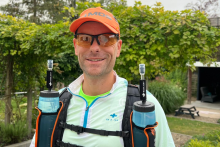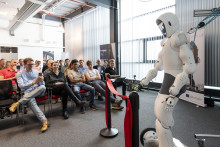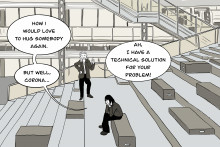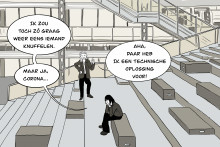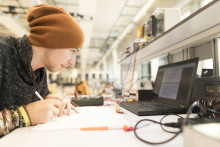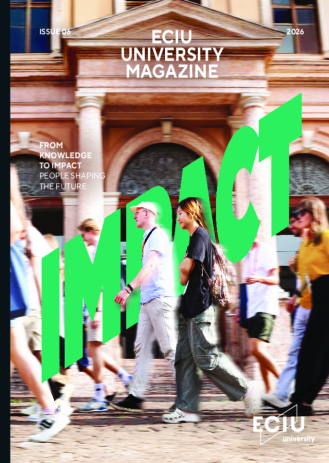Admittedly, even the journey there sounds intense. On Saturday afternoon, around half past three, Van Roon and his brother Eelko will board a flight to Amman, Jordan, followed by a bus ride to a hotel near the Dead Sea. They’ll have Sunday to acclimatise and go through the final checks with the event organisers. It’s no longer summer, so temperatures will be around thirty degrees – manageable, relatively speaking.
But they’re not there yet. On Monday morning, at half past four, the alarm will go off for a five-hour bus ride to the Valley of the Moon, Wadi Rum. That’s where the adventure begins: the Marathon des Sables, running for four days and 120 kilometres through the desert. In Van Roon’s case, all in the name of science.
As part of the research project Mission I.AM., Van Roon and a team of international researchers aim to develop a bionic prosthesis that will enable a para-athlete to complete the full 250-kilometre Sahara edition of the Marathon des Sables by 2030.
How do you train for something like this?
‘A lot,’ he laughs. ‘You alternate between interval training and long runs, about four times a week. Luckily, we’re not aiming for a top time – the goal is to collect data, not to win. So, there’s no real performance target, although, of course, personally you still want to do as well as possible.’
‘The climate might be a challenge. We’re used to the Dutch weather. They advised us to spend a lot of time in the sauna to prepare, but I didn’t have time for that. We do have good protective and breathable clothing, though. Over the past few weeks, I’ve done several 30-kilometre runs with a backpack.’
With a backpack?
‘Yes, we have to carry everything ourselves because we’re completely self-sufficient for those few days. That means freeze-dried meals, energy bars, a sleeping mat, sleeping bag, and some safety gear. The organisers provide water along the way and a GPS tracker.’
Why are you doing this?
‘To collect real-world race data. You can test endlessly in controlled lab environments, but nothing beats a solid dataset collected over several days in an unpredictable setting like the desert. This has been tried before, but the measuring equipment wasn’t ready yet. Sand and sweat got in, cables came loose...
‘I’ll be wearing an elastic band with various sensors on my body. EMG sensors under my knee measure how my muscles respond to certain movements, while IMU trackers record the angles of my joints and how I anticipate things like holes or hills.’
And then?
‘With that data, we hope to make bionic prostheses better suited to athletes’ needs. Our goal is to be ready by 2030, so that a para-athlete can take part in the 250-kilometre Marathon des Sables in Morocco.
‘Elite athletes using blades already perform impressively, but those are passive prostheses. They don’t adjust to the angle of impact or to different terrains, which means athletes sometimes miss that final degree of control to reach their full potential.
‘Brain-controlled bionic prostheses work more like a natural leg, allowing athletes to anticipate the terrain better – even in a desert. But to make those, we need a lot of data. And instead of letting someone else take that on, I volunteered myself.’
Would you want to go to Morocco yourself?
‘It’s quite demanding, both physically and on family life. My family is very supportive, but first, let’s see how this one goes,’ he says with a laugh.
You can follow Van Roon live from Monday via this link.


